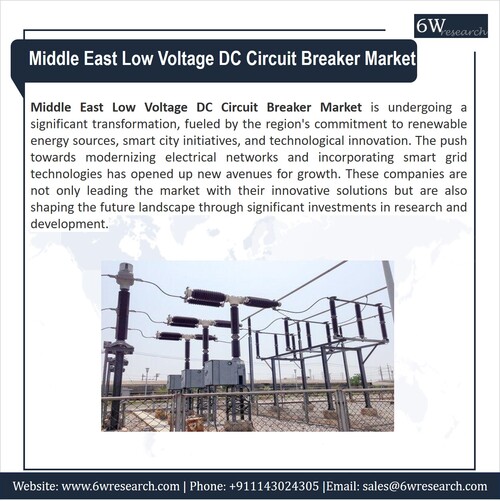Silicone Elastomers Market Projected to Reach $15.1 Billion by 2031Meticulous Research®—a leading global market research company, published a research report titled, ‘Silicone Elastomers Market by Type (Liquid Silicone Rubber (LSR), High-temperature Vulcanize (HTV)), Process (Extrusion, Molding), End-use Industry (Automotive, Healthcare, Electrical & Electronics, Construction), and Geography - Global Forecast to 2031.’
According to the latest report from Meticulous Research®, the silicone elastomers market is forecasted to reach $15.1 billion by 2031, growing at a compound annual growth rate (CAGR) of 7.9% from 2024 to 2031. The market's expansion is fueled by the increasing use of silicone elastomers in medical devices, advancements in material science, and high demand in the electrical and electronics sectors. However, growth is hindered by environmental concerns, sustainability issues, and stagnation in developed countries.
Opportunities for market growth are anticipated through the integration of silicone elastomers with IoT devices and their increasing use in the automotive industry. Nonetheless, fluctuations in raw material prices present a significant challenge to market growth.
The silicone elastomers market is categorized by type, process, and end-use industry. The types include room-temperature vulcanize (RTV), liquid silicone rubber (LSR), and high-temperature vulcanize (HTV). In 2024, HTV is expected to hold the largest market share of over 52%, driven by advancements in manufacturing technologies and its extensive use in industries requiring high-temperature applications, such as automotive and electronics. Meanwhile, the LSR segment is projected to experience the highest CAGR due to innovations in material science and its increasing demand in high-volume production for sectors like automotive and healthcare.
By process, the market is segmented into extrusion, molding, calendering, and others. The molding process segment is anticipated to account for the largest share of over 45% in 2024, attributed to the demand for LSR injection molding for complex parts and advancements in molding technologies. This segment is also expected to register the highest CAGR during the forecast period.
In terms of end-use industry, segments include automotive, aviation & aerospace, consumer goods, electrical & electronics, healthcare, energy, industrial machinery, construction, and others. The electrical & electronics segment is expected to hold the largest share of over 35% in 2024, due to the increasing use of silicone elastomers in components like power supplies and circuit boards. The healthcare segment is projected to grow at the highest CAGR, driven by the demand for biocompatible materials and silicone elastomers in medical devices and implants.
Geographically, the silicone elastomers market is divided into North America, Europe, Asia-Pacific, Latin America, and the Middle East & Africa. Asia-Pacific is expected to dominate with a share of over 53% in 2024, driven by rapid economic development, particularly in China and India, and the growing healthcare and construction industries. This region is also projected to register the highest CAGR of over 9% during the forecast period.
Key players in the silicone elastomers market include Momentive Performance Materials, Inc. (U.S.), China National Bluestar (Group) Co., Ltd. (China), The Dow Chemical Company (U.S.), Shin-Etsu Chemical Co., Ltd. (Japan), Wacker Chemie AG (Germany), DuPont de Nemours, Inc. (U.S.), and several others.
Download Sample Report Here @
https://www.meticulousresearch.com/download-sample-report/cp_id=5844
Key Questions Addressed in the Report:
What are the high-growth market segments by type, process, and end-use industry?
What is the historical market size for the silicone elastomers market?
What are the market forecasts and estimates for 2024–2031?
What are the major drivers, restraints, opportunities, challenges, and trends in the silicone elastomers market?
Who are the major players in the silicone elastomers market, and what are their market shares?
What is the competitive landscape like?
What are the recent developments in the silicone elastomers market?
What strategies are adopted by major market players?
What are the trends and high-growth countries?
Who are the local emerging players in the silicone elastomers market, and how do they compete with established players?
Contact Us:
Meticulous Research®
Email- sales@meticulousresearch.com
Contact Sales- +1-646-781-8004
Connect with us on LinkedIn-
https://www.linkedin.com/company/meticulous-research Silicone Elastomers Market Projected to Reach $15.1 Billion by 2031Meticulous Research®—a leading global market research company, published a research report titled, ‘Silicone Elastomers Market by Type (Liquid Silicone Rubber (LSR), High-temperature Vulcanize (HTV)), Process (Extrusion, Molding), End-use Industry (Automotive, Healthcare, Electrical & Electronics, Construction), and Geography - Global Forecast to 2031.’
According to the latest report from Meticulous Research®, the silicone elastomers market is forecasted to reach $15.1 billion by 2031, growing at a compound annual growth rate (CAGR) of 7.9% from 2024 to 2031. The market's expansion is fueled by the increasing use of silicone elastomers in medical devices, advancements in material science, and high demand in the electrical and electronics sectors. However, growth is hindered by environmental concerns, sustainability issues, and stagnation in developed countries.
Opportunities for market growth are anticipated through the integration of silicone elastomers with IoT devices and their increasing use in the automotive industry. Nonetheless, fluctuations in raw material prices present a significant challenge to market growth.
The silicone elastomers market is categorized by type, process, and end-use industry. The types include room-temperature vulcanize (RTV), liquid silicone rubber (LSR), and high-temperature vulcanize (HTV). In 2024, HTV is expected to hold the largest market share of over 52%, driven by advancements in manufacturing technologies and its extensive use in industries requiring high-temperature applications, such as automotive and electronics. Meanwhile, the LSR segment is projected to experience the highest CAGR due to innovations in material science and its increasing demand in high-volume production for sectors like automotive and healthcare.
By process, the market is segmented into extrusion, molding, calendering, and others. The molding process segment is anticipated to account for the largest share of over 45% in 2024, attributed to the demand for LSR injection molding for complex parts and advancements in molding technologies. This segment is also expected to register the highest CAGR during the forecast period.
In terms of end-use industry, segments include automotive, aviation & aerospace, consumer goods, electrical & electronics, healthcare, energy, industrial machinery, construction, and others. The electrical & electronics segment is expected to hold the largest share of over 35% in 2024, due to the increasing use of silicone elastomers in components like power supplies and circuit boards. The healthcare segment is projected to grow at the highest CAGR, driven by the demand for biocompatible materials and silicone elastomers in medical devices and implants.
Geographically, the silicone elastomers market is divided into North America, Europe, Asia-Pacific, Latin America, and the Middle East & Africa. Asia-Pacific is expected to dominate with a share of over 53% in 2024, driven by rapid economic development, particularly in China and India, and the growing healthcare and construction industries. This region is also projected to register the highest CAGR of over 9% during the forecast period.
Key players in the silicone elastomers market include Momentive Performance Materials, Inc. (U.S.), China National Bluestar (Group) Co., Ltd. (China), The Dow Chemical Company (U.S.), Shin-Etsu Chemical Co., Ltd. (Japan), Wacker Chemie AG (Germany), DuPont de Nemours, Inc. (U.S.), and several others.
Download Sample Report Here @ https://www.meticulousresearch.com/download-sample-report/cp_id=5844
Key Questions Addressed in the Report:
What are the high-growth market segments by type, process, and end-use industry?
What is the historical market size for the silicone elastomers market?
What are the market forecasts and estimates for 2024–2031?
What are the major drivers, restraints, opportunities, challenges, and trends in the silicone elastomers market?
Who are the major players in the silicone elastomers market, and what are their market shares?
What is the competitive landscape like?
What are the recent developments in the silicone elastomers market?
What strategies are adopted by major market players?
What are the trends and high-growth countries?
Who are the local emerging players in the silicone elastomers market, and how do they compete with established players?
Contact Us:
Meticulous Research®
Email- sales@meticulousresearch.com
Contact Sales- +1-646-781-8004
Connect with us on LinkedIn- https://www.linkedin.com/company/meticulous-research








